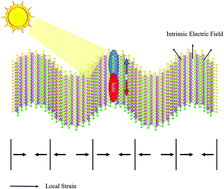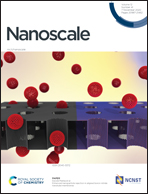Exciton manipulation in rippled transition metal dichalcogenides†
Abstract
Two-dimensional (2D) transition metal dichalcogenides (TMDs) have shown tremendous potential for applications in optoelectronics due to strong light–matter coupling. However, little is known about how to alter and control the excitonic properties in TMD monolayers. Here, based on many-body perturbation theory via the GW approach and Bethe–Salpeter equation, we systematically investigate exciton manipulation in rippled TMD monolayers. Our results demonstrate that local strain induced by structure deformation plays an important role in determining the electronic and optical properties of TMD materials. Instead of delocalizing in flat monolayers, excitons are pushed to accumulate at the regions with high tensile stress in rippled structure, which can be ascribed to the excitonic funnel effect. In addition, when build-in electric field is also applied, the localized excitons are spatially separated along the zigzag direction, resulting in long exciton lifetime, thus facilitating their future applications in light detecting and harvesting. Our findings provide a way to tailor the excitonic properties in 2D materials and promote their performance in optoelectronic and photovoltaic devices.



 Please wait while we load your content...
Please wait while we load your content...